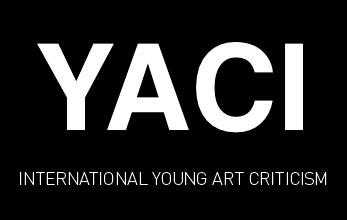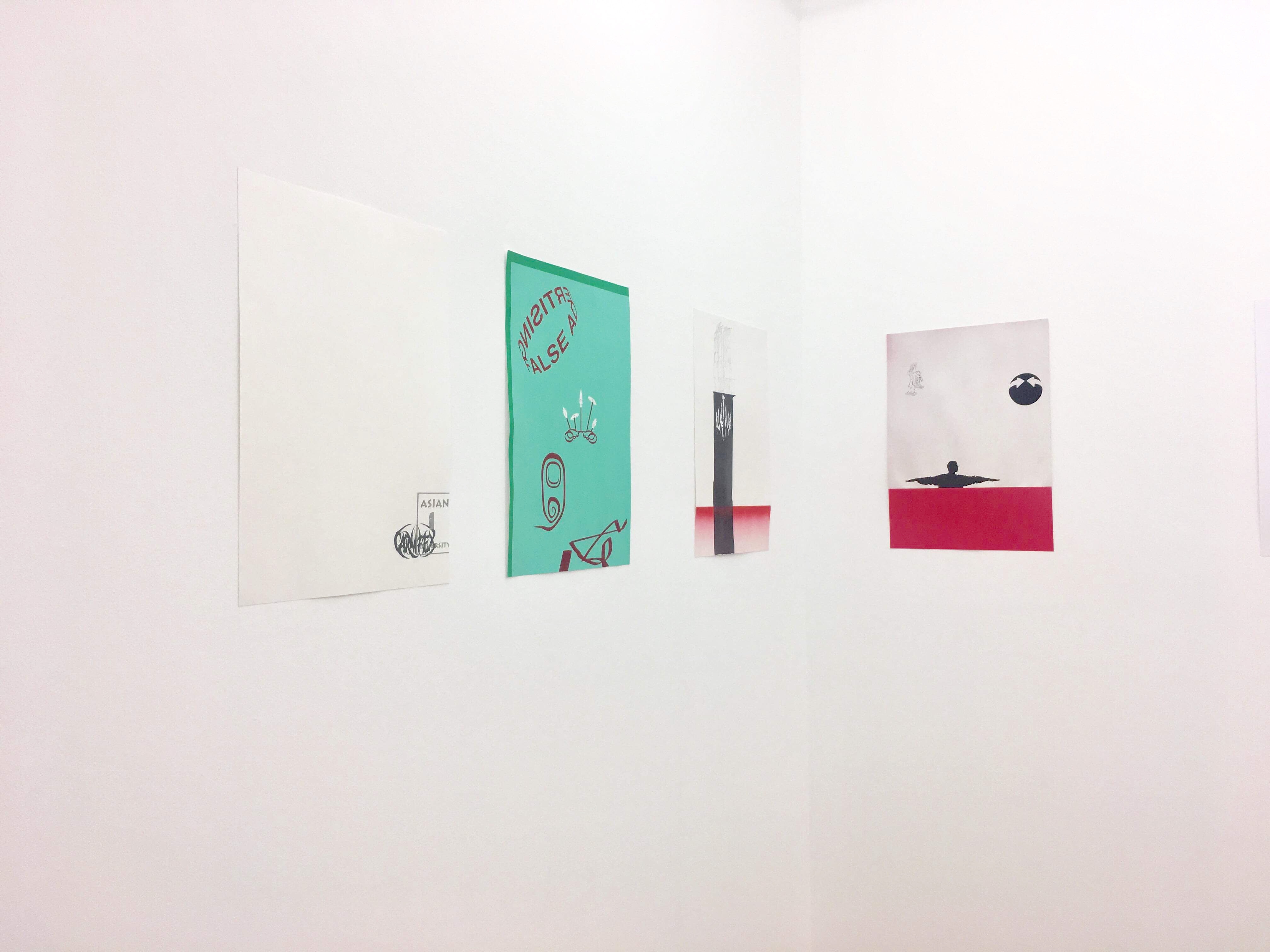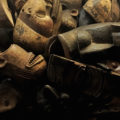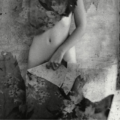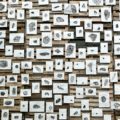THE SOULS OF NINO DE LUCA AND STEFANO TRAPPOLINI
TRA TERRA E MARE. VIAGGIO DELLE ANIME (BETWEEN LAND AND SEA. JOURNEY OF SOULS) is the title of an exhibition held at the Pavart Gallery in Rome between the end of October and the beginning of December 2023: a two-person show by Nino De Luca and Stefano Trappolini, curated by the gallery’s founder and curator, Velia Littera.
In the intimate space of the gallery, the contrast between the cold colours employed by the first artist and the warm palette of the second certainly commands the visitor’s first impression, which the curator has carefully designed.
Nino De Luca first included gauze as a component of his works in 2001. Far from neglecting the use of other materials taken from the world of the everyday, De Luca has made them the protagonists of his creations throughout his artistic career, along with a myriad of blue hues, the iconic colours of an artist who has dedicated much of his career to exploring the landscape, the horizon, the thin thread between sea and sky. At the outset they play a compositional role, they later acquire a precise symbolic role. This becomes particularly evident in pieces created in 2013: shaken by a shipwreck that occurred that year on the 3rd of October near Lampedusa, the artist created Blu Profondo (Deep Blue), a cycle of ten works on paper in which the gauze placed prominently in the centre of the work come to signify the portraits and tombstones of those who were lost, the outline of their clothes floating in the icy water, their souls torn apart, their bodies in their final descent to darkness.

Stefano Trappolini began drawing human figures in the act of walking between 1995 and 1997. His interest in the subject was sparked whilst stood in front of Vincent van Gogh’s Prisoners’ Round, in which the evidently futile circular movement of the prisoners left the artist with a strong sense of alienation. It was from this experience that the silhouette, now the modular unit of his work, took shape in 2010, when he reduced a photograph he had taken of a friend walking in his studio, into a bold silhouette. An image that embodies both absence and possibility, the silhouette allows us to recognise both the self and the other, and in their grouping a metaphorical representation of humanity, an element that Trappolini exploits with a precise intention in 2013 (coincidentally the same year as De Luca’s Blu Profondo) when he exhibits Viaggiatori viaggianti (Travelling Travellers) at the Pigorini Museum in Rome. The installation created for the occasion is in fact made up of fifty works accompanied by a soundtrack assembled by the artist, a buzzing clamour obtained by superimposing various interviews with political refugees conducted by anthropologist Martina Giuffré.
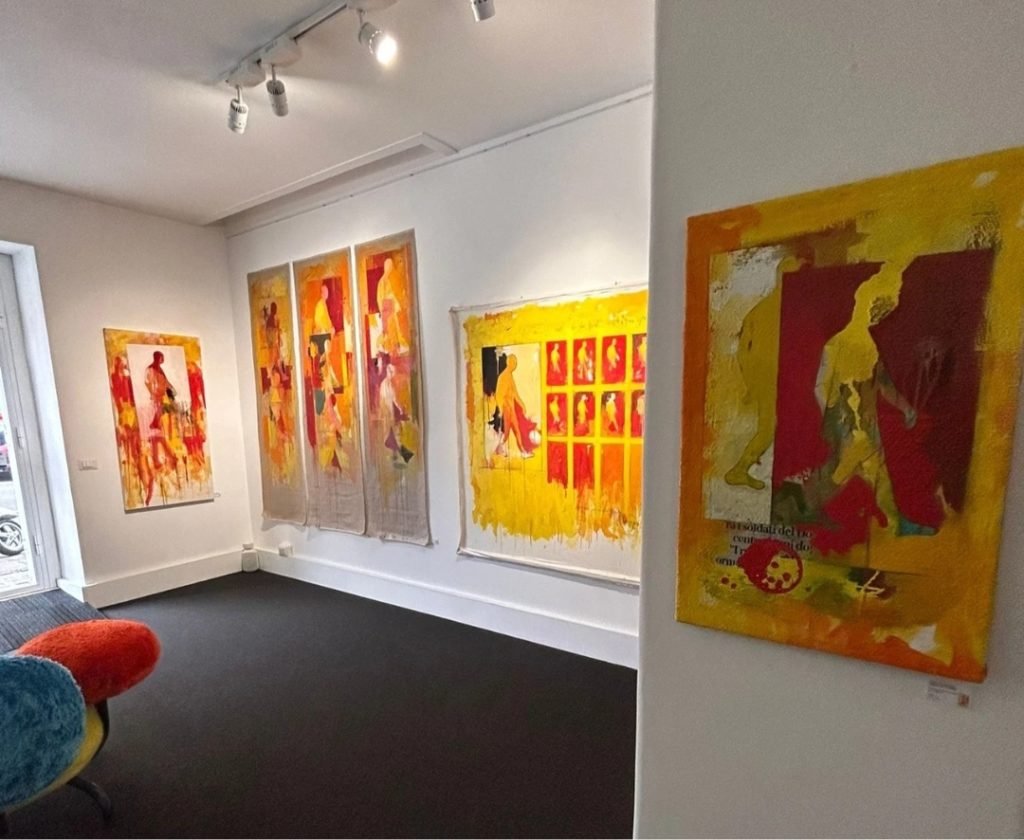
It is not difficult to imagine why Velia Littera had the intuition to introduce these two artists to each other and to present them to the public in a space that, since its opening, has sought to give life to exhibitions and projects with a strong ethical charge. But what does it mean to hold an exhibition with these two artists ten years after Blu Profondo and Viaggiatori viaggianti?
In 2010, Professor Ivan Bargna, in a reflection on the contemporary meaning of ‘diaspora’, observes:
«The processes of globalisation, which multiply transnational communities of various kinds and increase the mobility of people and things across borders, have […] expanded the notion of diaspora, ultimately making it the sign not of a particular situation […] but of a common and widespread condition. […] This extensive use of the term “diaspora” is justified by the disjunctive and dislocated character of existence as a qualifying feature of most contemporary forms of subjectivity, both in the postmodern and in the postcolonial condition».
Trappolini’s silhouettes can then be seen in their full potential. In that particular exhibition, Trappolini had brought the empty portraits of a certain part of humanity as a deafening absence, as a background hum with which one is forced to recognize. But in order to really understand the nature of his investigation, it is important to remember that the silhouette model is not that of a political refugee, nor even the silhouette of the artist himself, but that of his friend. From the outset, it is not a matter of wanting to see someone, but of wanting to see through someone. At the heart of these silhouettes is the intention to find a deeper meaning of the self by re-reading it through the experience of the other as part of a journey that unites us all, not only to represent an otherness and its experience, nor to relegate the tragedy as something distant from us, but to highlight the human nature at the root of the observer and the portrayed, and at the same time to make us aware of what it can mean to recognise ourselves in these silhouettes.
One of the first artistic references that might come to mind when looking at Trappolini’s paintings is Renato Mambor’s silhouettes, particularly the series of early 1960s Uomini Statistici (Statistical men) and Timbri (Stamps), and it is especially in works from 1963 such as Uomini incasellati (Framed Men) that we see a common reflection on human nature as perceived at the time of each series. Some of the works in this series were included in the Lombardo-Mambor-Tacchi exhibition at Galleria la Tartaruga in 1963. In the exhibition catalogue Lombardo wrote a text in which he stated:
«A new relationship with reality is proposed to us today […], a new possibility of the image. Man is ‘reproduced’ in his typical attitudes, in his moments of relationship, coldly framed in his space. […] One can see how each of our experiences today is no longer individual and unrepeatable, but just the opposite. […] The modern man is constantly assaulted by the perceptive images of advertising, the cinema, the press, the machine, he has lost his field of individual dominion to be assimilated into an infinite array of ready-made behaviours made available to everyone».
Some of the implications of these words are reflected in Jonathan Crary’s reflections on the relationship between technology, images, and the masses in his essay from 2013:
«The presence of television quickly led to a revision of the concept of social belonging […]. Within fifteen years or so, there was a mass displacement of entire populations into prolonged states of relative immobility. Overnight, hundreds of millions of individuals began to spend many hours of the day and night sitting».
«It could be said that between the 1950s and 1960s, television introduced into the domestic environment disciplinary strategies designed for other contexts. […] immobile individuals, isolated from each other and deprived of any political efficacy. It is, at least in part, a pattern that corresponds to the typical working scene of an industrial model».
Perhaps we should therefore look at the differences between the 1960s and today in the relationship between media, technology, and social perception to understand another nuance of Trappolini’s silhouette and how it differs from the individual in Mambor’s Timbri. Again, Crary has some interesting insights to offer in this regard, noting the emergence of a « more creative user, capable of proactively intervening in the use of technological products and […] of interfacing with global information networks» from the 1990s onwards, and pointing out how the sense of disorientation that marked the moment the television was turned off, the momentary revelations of incongruity between the physical world and the media, «were once limited to environments where these devices, not being portable, were available. Thanks to the proliferation of increasingly prosthetic instruments, this variety of transient moments occurs everywhere». In the «social atomisation of neoliberalism», which, according to Crary, has a socio-economic cause, but is also implemented by social media among other things, we can then recognise that «disjunctive and dislocated character of existence as a qualifying feature of most contemporary forms of subjectivity» that Bargna speaks of. The static television set has been replaced by the pocket-sized smartphone, the immobility of the assembly line by digital nomadism and the myth of the dynamic entrepreneur who is never still, who sacrifices even his sleep to be productive in an accelerated and ubiquitous economic mechanism and who, thanks to the convenient device in his pocket, quickly turns into a consumer for a few minutes while travelling from one appointment to another.
The media, like television in the 1960s according to Crary, still seem to instruct the population to become accustomed to a certain rhythm and mechanism of production and consumption, the same mechanism that, when the gaze is widened globally, appears as one of the causes of the migrations that Trappolini and De Luca portrayed in 2013.
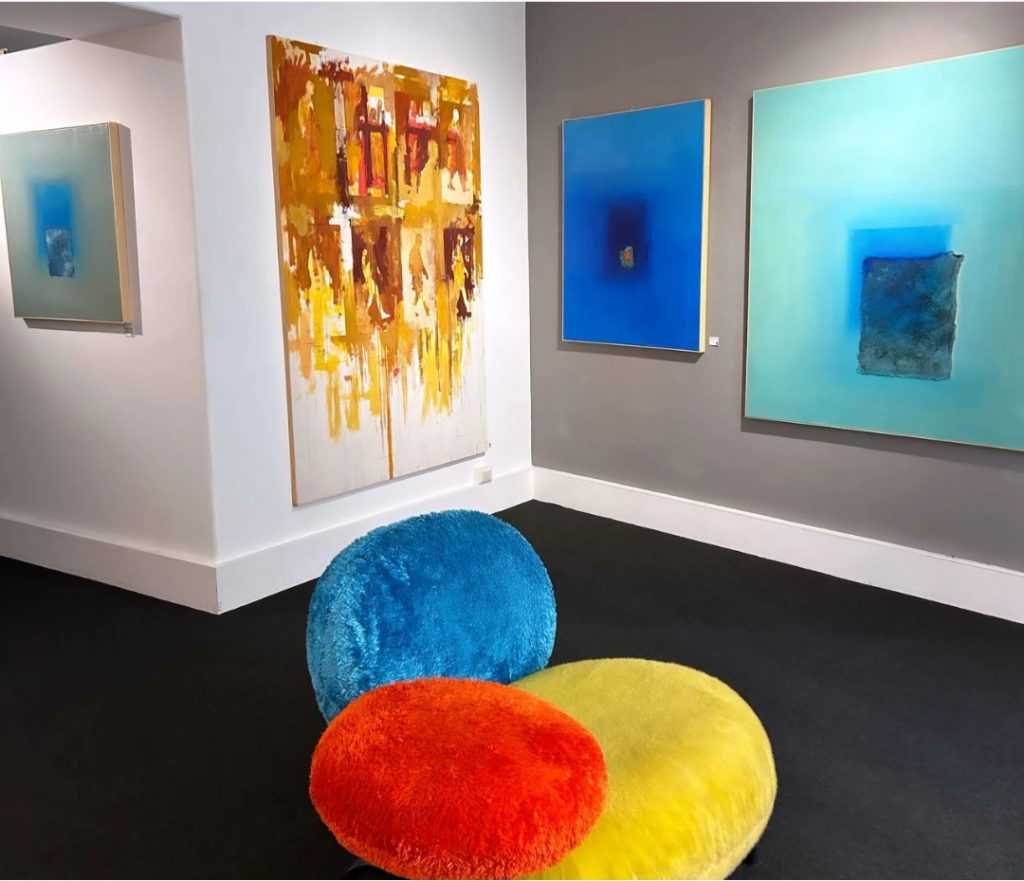
In truth, Trappolini states that he only really discovered Mambor’s Timbri after creating his own silhouettes (which, as already mentioned, have their earliest origin in Van Gogh’s Prisoners’ Round), so there is no direct relationship of influence between the two. However, it is interesting that he recognized his own silhouettes in Mambor’s (as he states in a 2014 interview with Marcella Cossu), and that two Italian artists fifty years apart arrived at such similar forms of expression, and it is perhaps significant that the differences between Trappolini’s silhouettes and Mambor’s Uomini incasellati are consistent with Crary’s reflections.
Trappolini says that the individuals in his silhouettes do not seem to communicate with each other «except for the common purpose of following the same path», driven by «the desire to believe in the possibility of a better situation», heading « towards a mysterious destination that I hope is positive». Perhaps this destination can be found in De Luca’s works, which seem to act as a counterbalance to the orange, red and ochre that surround Trappolini’s silhouettes. If the latter are the colours of the earth in this journey of souls, De Luca’s blues represent the sea, a «sea in which the artist seems to move without fear, even as he plunges into his own existential abyss, which is everyone’s, the tragic nature of human history». Trappolini’s souls, unable to continue their journey, are almost forced to contemplate a place that is a receptacle for other souls, diaphanous and almost divine in their integration with the landscape. Observing this monument to tragedy, they cannot fail to notice «that orange stain repeated in several canvases, perhaps the sign of a difference, of a uniqueness».
De Luca’s gauzes then reveal their true nature: not just a tale of someone else’s tragedy, but a moving and delicate epic of human nature. They are all individuals, woven from the same cloth, but with their own personal weaves. If the Prisoners’ Round had given Trappolini «a sense of alienation» that reminded him of «the dimension of purgatory», De Luca’s works seem like a paradise on earth, not religious but moral. In the past, De Luca has produced a series of works that allow us to imagine him, his teary eyes filled with rage and grief, watching the tragedy unfolding at sea from the battlements of the European fortress, while murmuring poems that sound like curses, such as the one found in the small catalogue of the Blu Profondo series: «[…] but their souls/always alive/will remain heavy anchors/in the conscience of the indifferent/responsible».
This lyrical but belligerent force has never left De Luca, who seems to be well aware of a concept that Bargna also reiterates:
«To speak of relations is not to affirm that all relations are equal and ethically correct: they are in fact relations of forces, relations of power and knowledge, which are usually asymmetrical and unbalanced, if not violent. Even art does not shy away from this: although we like to present it to ourselves as a world above the fray, in reality art and, more generally, images […] serve to wage war, they are a continuation of war by other means».
A war waged by De Luca, ruthlessly and calmly, with broad strokes of the brush, an explicit and political protest in Blu Profondo and a more subtle struggle in the rest of his production, adjacent to the one that Lombardo, Mambor and Tacchi wanted to wage in 1963 against a certain social determinism stemming from «television, the press, the machine», which «ends up invading the field of individual originality to the point of sterilising any emotional cues and any interest in intersubjective relations».
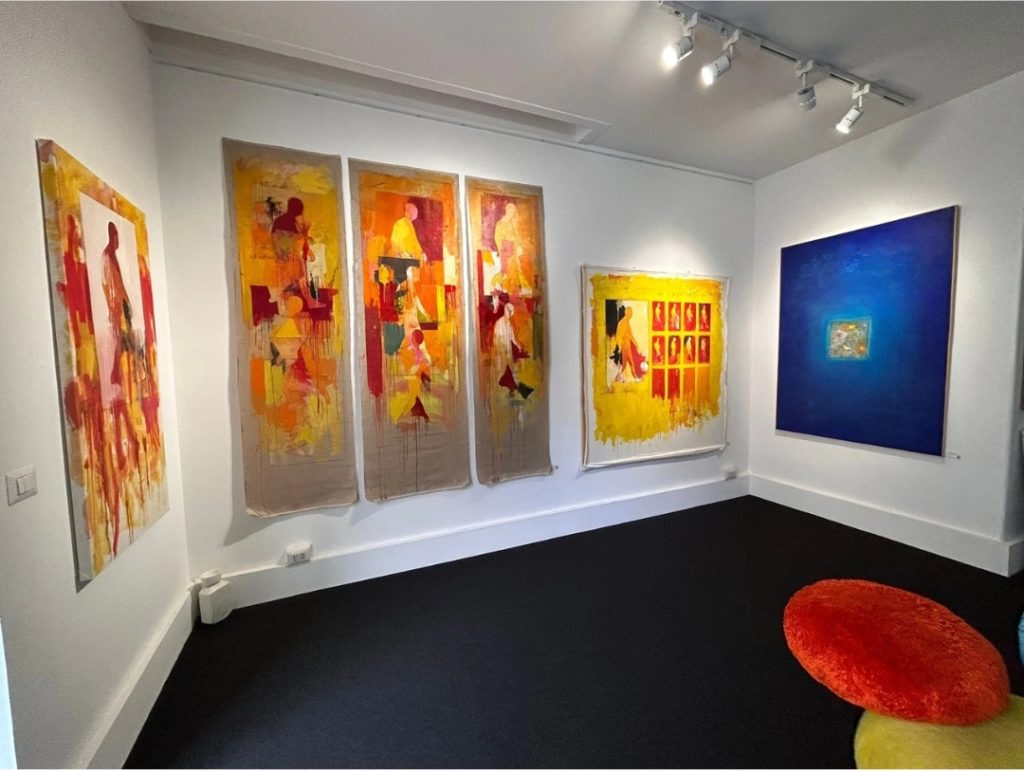
The apparent absence of movement in De Luca’s works seems to advise a contemplative frontality, both between individuals and towards something that uplifts them spiritually, a moving veneration of individuality as an inescapable value (as suggested by the titles of the two paintings exhibited as Anima di luce propria – Soul shining of its own light) and at the same time of humanity as a root shared by all individualities, whatever their culture or nature (as works such as Pezzi in comune –Pieces in common and Oltre ogni confine – Beyond any border suggest). Trappolini seems to want to immerse himself in the flow of the contemporary human journey and invite the viewer to do the same, a tendency that can also be felt in his use of everyday objects such as newspaper fragments (as in Guerra e basta – Only war) or coffee beans (in Testa di caffè – Coffee head), a practice that is opposite and complementary to De Luca’s sublimation of medical gauze. The latter seem to interrupt Trappolini’s perpetual journey. De Luca’s gauzes represent what Trappolini’s silhouettes would see if, at the end of their journey, they stopped and looked into each other’s eyes.
[This article was first published in Italian. The English translation is by the author.]
